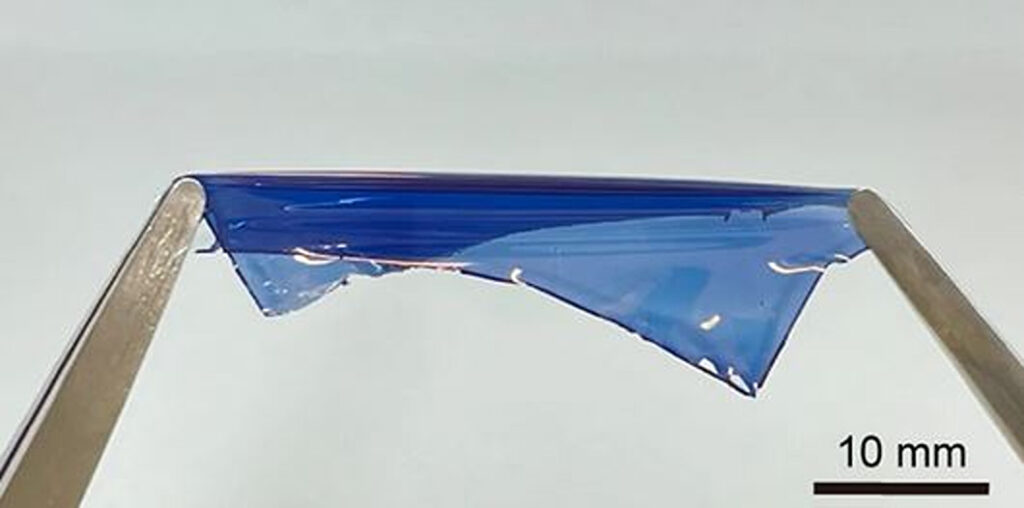Researchers in Japan have built a stretchable organic solar cell that can ensure high efficiency while preventing the formation and spread of cracks. The cell is built with a hole transport layer based on PEDOT:PSS, treated with a new additive type.
A group of researchers led by the Riken Center for Emergent Matter Science in Japan has fabricated an intrinsically stretchable organic photovoltaic (IS-OPV) cell that can reportedly maintain high efficiency levels while withstanding high voltages and cyclic stretch endurance.
In the newspaper “Intrinsically stretchable organic solar photovoltaics by redistributing strain to PEDOT:PSS with improved stretchability and interfacial adhesion”, published in communication about naturethe scientists explained that the cell was built without an electron transport layer (ETL) and with a hole transport layer based on PEDOT:PSS that incorporates the zwitterion 4-(3-ethyl-1-imidazolio)–1-butane sulfonate (ION E). additive, the latter helping the cell to achieve high extensibility by delocalizing the tension in the absorber and redistributing it to the underlying layers.
“ION E substantially improved the stretchability of PEDOT:PSS by tuning the crystalline structure and strengthening the interfacial adhesion between the PEDOT:PSS layer and the polyurethane (PU) substrate through enhanced hydrogen bonds,” they said. “In addition, we used a simple terpolymerization-based strategy to synthesize a polymer donor, namely Ter-D18, which was then mixed with the small molecule acceptor Y6, yielding a new active system that helped achieve high efficiency and superior performance. mechanical properties.”
They also placed eutectic gallium-indium (EGaIn) liquid metal on the absorber as the top cathode, which they say prevented the absorber-cathode interface from affecting the device’s performance.
Image: Riken Center for Emergent Matter Science, nature communication, Common License CC BY 4.0
According to the research team, the proposed redistribution strategy can suppress the initiation and propagation of cracks in the cell, which in turn reduces performance degradation under high tensile stresses and repetitive stress cycles.
Tested under standard lighting conditions, the cell achieved an energy conversion efficiency of 14.2%. Moreover, it was found that with a tensile strength of 52% it still achieved an efficiency of 80%. Moreover, after 100 stretching cycles at 10% strain, the efficiency was still 95%.
“This device design strategy does not rely solely on exploiting the mechanical properties of the active layer to impart stretchability to the entire device, and offers enormous potential for exploring several other active benchmark systems, providing a new path to high-performance IS-OPVs is mapped out. fabrication,” the academics said.
Other researchers from the Riken Center for Emergent Matter Science in Japan recently fabricated a waterproof and flexible OPV solar cell that can be used in portable electronics. At 3 micrometers thick, it is believed to be the first cell of its kind to survive a washing machine cycle and maintain its efficiency after multiple cycles.
This content is copyrighted and may not be reused. If you would like to collaborate with us and reuse some of our content, please contact: editors@pv-magazine.com.
Popular content


